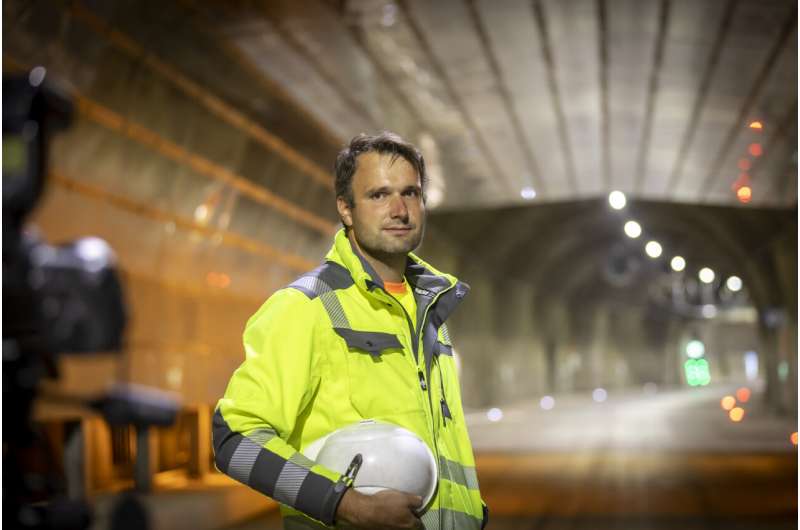
A team from Graz University of Technology has analyzed the risk and damage potential of hydrogen vehicles in tunnels and derived recommendations. Their conclusion? Any damage would be extensive, but its occurrence is unlikely. They presented the findings at The 12th International Conference on Tunnel Safety and Ventilation (TSV 2024), which was held in Graz from April 16–18.
In addition to electric vehicles, hydrogen-powered vehicles are also seen as an alternative to conventionally powered vehicles. However, an increase in the number of such cars with fuel cells (fuel cell electric vehicles—FCEVs) would also result in completely new hazard scenarios, especially in tunnels.
In the HyTRA project, Graz University of Technology (TU Graz) has investigated what types of incidents involving hydrogen-powered vehicles in tunnels are realistic, what dangers arise for people and the tunnel structure, and what measures can be taken to minimize these risks.
Low probability of occurrence, high damage potential
There is virtually no empirical data on real accidents involving hydrogen-powered vehicles in tunnels due to their low traffic share to date. Therefore, only a rough estimate of the probability of occurrence could be made based on experience with gas-powered vehicles, which indicated a low probability.
In comparison, the potential extent of damage was analyzed in great detail on the basis of experiments from the EU HyTunnel-CS project, which ended in 2022. Due to the high energy density of hydrogen and the high pressure at which it is stored, FCEVs have a very high damage potential.
According to the current standard, hydrogen is stored in cars at a pressure of 700 bar and in lorries and buses at 350 bar. If damage occurs to a tank, a great deal of energy is quickly released; if hydrogen catches fire, it burns at temperatures of over 2,000 degrees Celsius. Although the tanks are very robust and well protected against mechanical impact, they cannot withstand a rear-end collision with a lorry. This scenario should therefore be avoided as far as possible.
Three hazard scenarios
The most likely outcome of an accident involving an FCEV is that there will be no significant impact from the hydrogen. However, three different hazard scenarios can occur in the event of serious accidents.
In the first case, the thermal pressure relief device (TPRD) is triggered when the pressure rises as a result of a thermal impact (e.g. vehicle fire), releasing the hydrogen from the tank in a controlled jet. This keeps the pressure at a certain level and prevents the tank from rupturing.
If the discharged hydrogen ignites—which can easily happen when mixed with air—the flame is directed towards the ground. Nevertheless, it remains dangerous because hydrogen burns without color or odor, but the danger zone is limited.
If the TPRD fails, the tank can explode, creating a blast wave that spreads through the entire tunnel. Up to approx. 30 meters there is a risk of death, up to approx. 300 meters there is a risk of serious internal injuries such as bleeding to the lungs, and further away there is still a risk of ruptured eardrums.
The third scenario is the least likely. It occurs when the hydrogen is released without being ignited. As the lightest element in the periodic table, hydrogen rises and collects in a cloud under the tunnel ceiling. If there is an ignition source there (e.g. hot lamps or an electrical impulse starting a fan), a hydrogen cloud explosion follows, which also causes a blast wave.
More information: Martin Aggarwal et al, Hydrogen Powered Vehicles in a Tunnel Incident – Risks and Consequences, Verlag der Technischen Universität Graz (2024). DOI: 10.3217/978-3-85125-996-4-45
Citation: What are the risks of hydrogen vehicles in tunnels? (2024, May 28) retrieved 10 June 2024 from https://techxplore.com/news/2024-05-hydrogen-vehicles-tunnels.html
This document is subject to copyright. Apart from any fair dealing for the purpose of private study or research, no part may be reproduced without the written permission. The content is provided for information purposes only.
